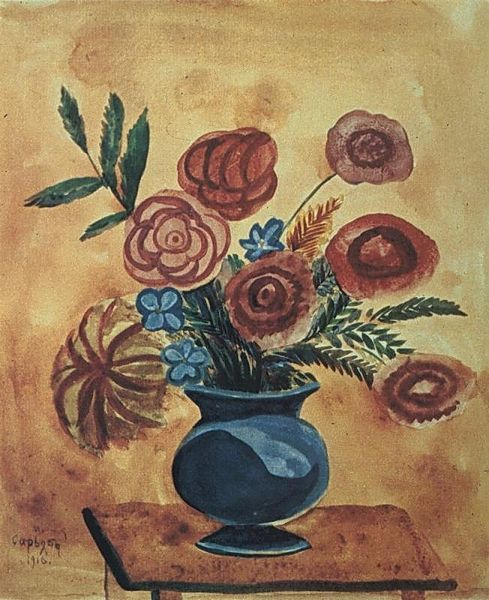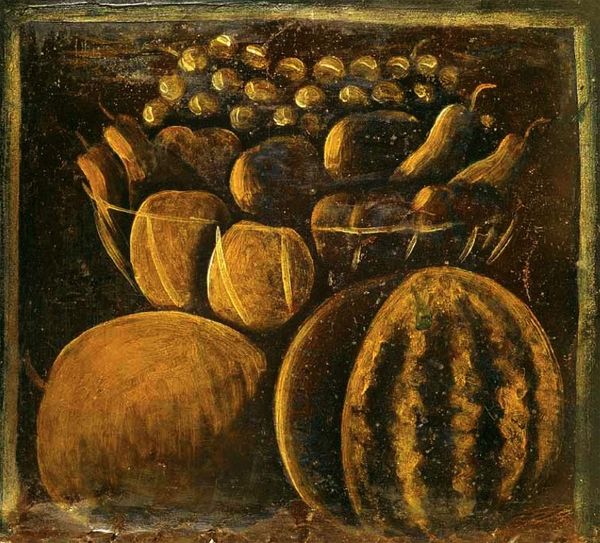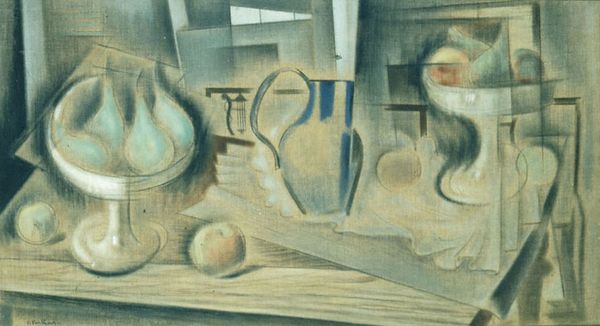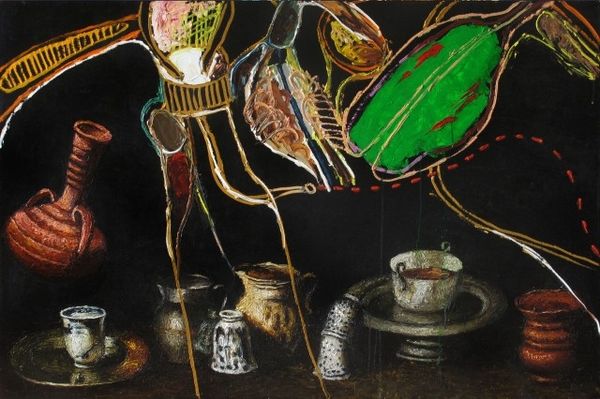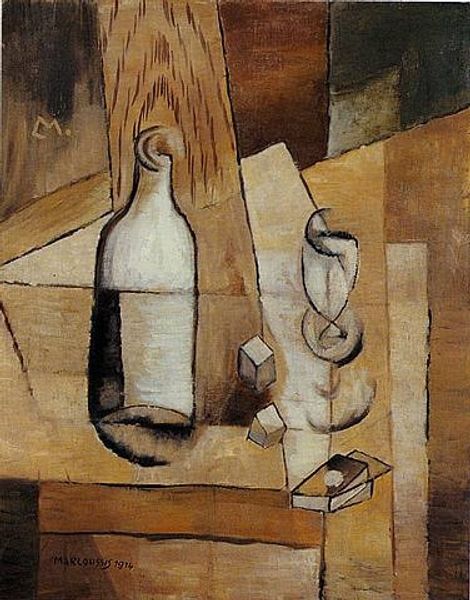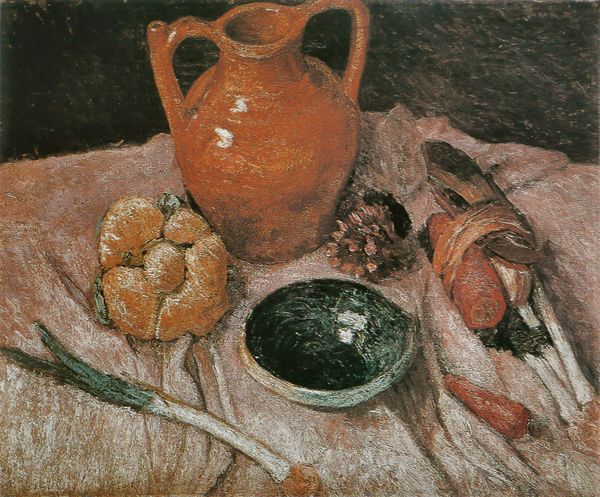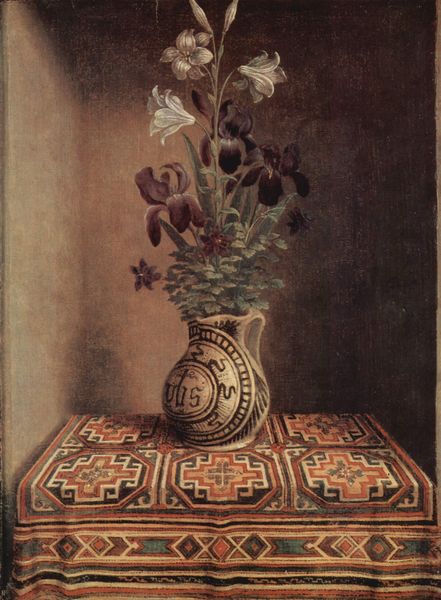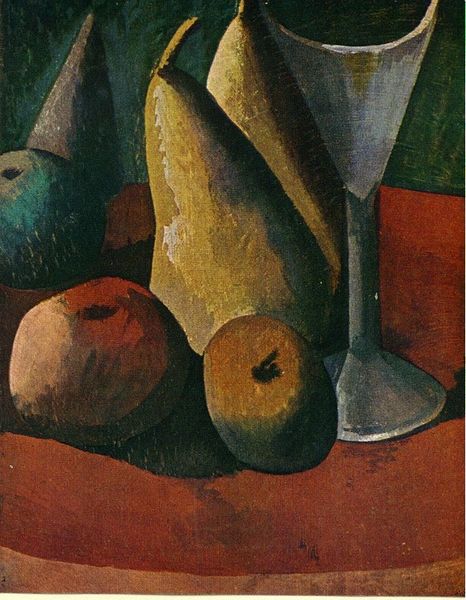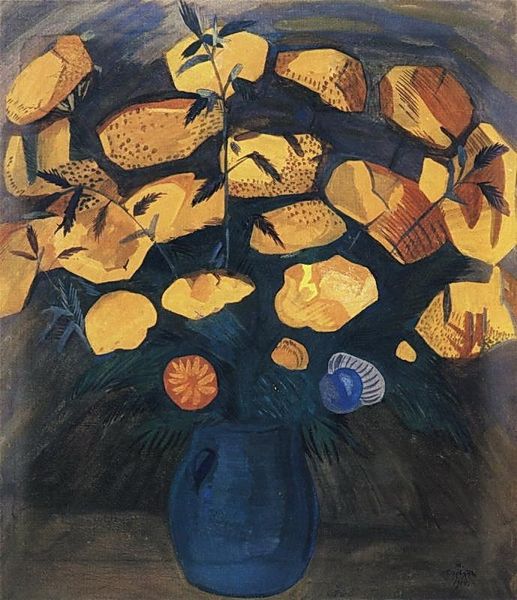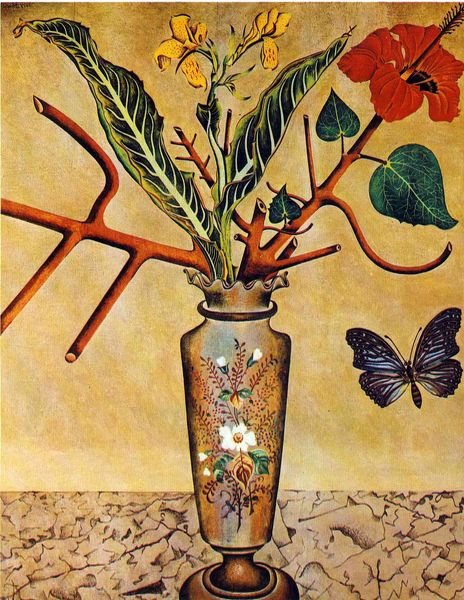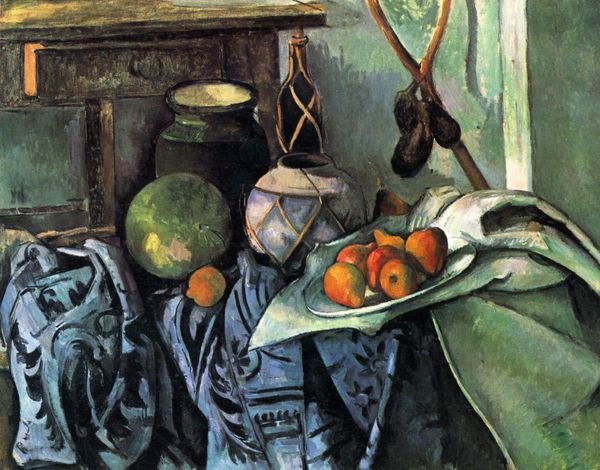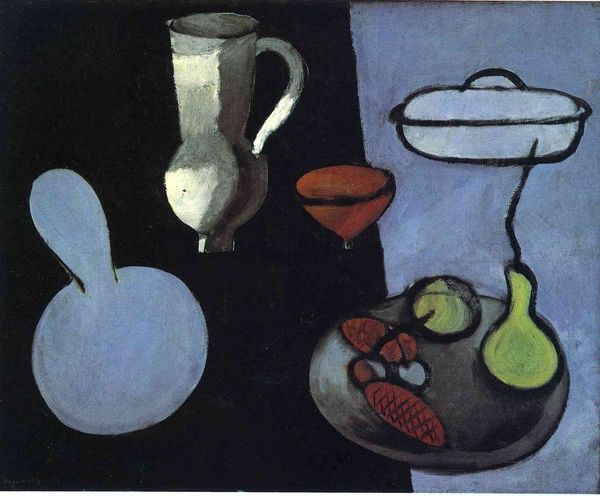
Two Georgians by a Giant Wine Jar (Quevri)
0:00
0:00
nikopirosmani
Art Museum of Georgia (AMG), Tbilisi, Georgia
painting, oil-paint
#
portrait
#
painting
#
oil-paint
#
landscape
#
figuration
#
oil painting
#
painting art
#
genre-painting
Dimensions: 101 x 216 cm
Copyright: Public domain
Curator: Immediately, I’m drawn to the imposing stillness of this piece— the deep, muted palette, and the almost reverent poses of the figures. There’s a definite gravity here. Editor: The painting before us is titled "Two Georgians by a Giant Wine Jar (Quevri)" by Niko Pirosmani. As its title suggests, we see two figures standing either side of a large earthenware vessel. Although untitled, many of Pirosmani’s works explore similar genre subjects and Georgian social life. Curator: It's intriguing how the traditional clothing and weaponry are presented alongside symbols of viticulture, really grounding it in Georgian identity, but perhaps also making it read as a comment about patriarchy and power structures in the region at that time. Is there something about this kind of display of traditional culture that subtly bolsters the societal hierarchies? Editor: Well, certainly, understanding Georgian culture is vital for contextualizing the work. Georgia’s viniculture tradition dates back millennia and the Quevri winemaking method is a significant part of the country’s identity, a custom inscribed on the UNESCO Intangible Cultural Heritage Lists. This context can offer insight into the socio-cultural factors impacting art. Curator: It feels less about documentation, though. The figures appear less like realistic depictions and more like stylized representations embodying certain ideals of Georgian masculinity and cultural tradition. And that huge Quevri becomes a monument to these identities, really prompting us to unpack what’s being upheld or critiqued through Pirosmani’s artistry. Editor: Exactly! The monumental scale is deliberate and symbolic, underscoring the significance of this cultural object. Moreover, the institutional history of art often overlooks such representations of local culture. We must question why certain art becomes canonized and how cultural context informs these selections. Curator: So ultimately, examining who gets memorialized in art allows for critical discourse on privilege and visibility, encouraging viewers to really think about representation and narrative control. Editor: Absolutely, it also pushes us to consider the museum itself, its role as a shaper of taste, and the critical importance of inclusive practices in presenting diverse artistic and cultural perspectives. Curator: It really urges a deeper inquiry into how cultural narratives around gender, class and tradition are reinforced, or even challenged, by artwork like this. Editor: I agree, examining the broader art market that circulated and celebrated artwork like this provides an important window onto Georgian social history and cultural exchange at that time. It is these perspectives that truly contextualize the piece for audiences today.
Comments
No comments
Be the first to comment and join the conversation on the ultimate creative platform.


